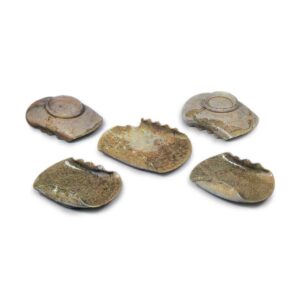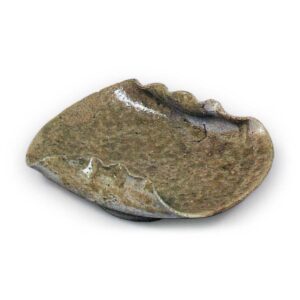

Excavated from Sanage Kiln, Aichi Pref.
10th century
Height 3.7 cm, mouth diameter 8.0 x 11.6 cm, bottom diameter 4.6-5.0 cm
This particular shape, with both edges of the dish folded, is called an “aji-zara” (ear dish).
It was used as a chopstick rest in the Heian period (794-1185), and is still made as ritual earthenware at the Ise Shrine. Mimisara is made not only in ash glazed pottery, but also in earthenware, black earthenware, and Sue ware. The folded edges are an older form, but by the late 10th century, the folds had disappeared, and the dish became smaller in size.
The five pieces in this group have the same base and glaze tone, suggesting that they were fired in the same kiln. It is wheel-thrown and made of grayish-white, slightly sandy clay with a small base and a rounded, degenerate exterior surface. The ash glaze was applied with a brush only to the upper surface and the side rim of the ear.



